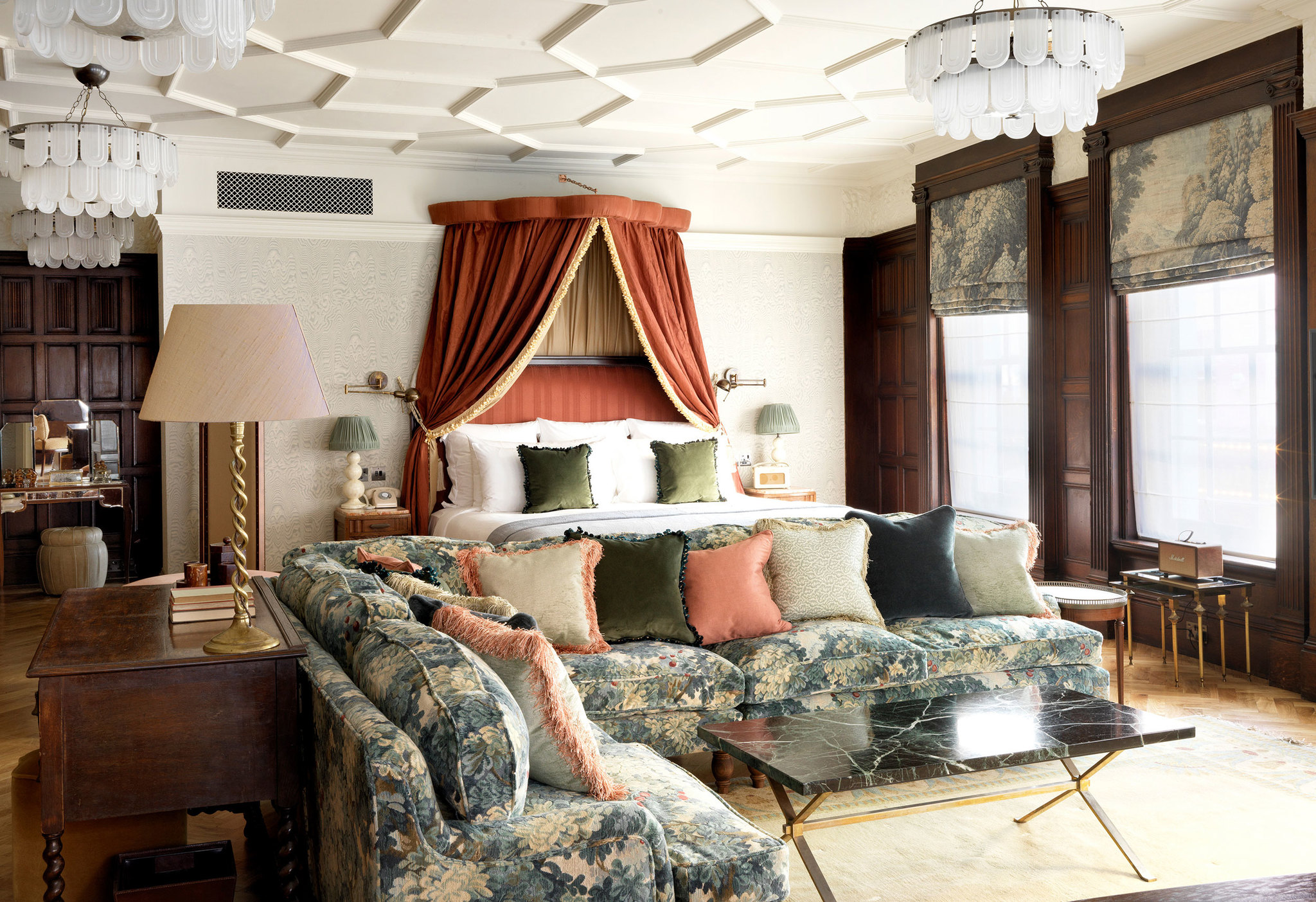We may earn revenue from the products available on this page and participate in affiliate programs.
I was having dinner at Kettner’s Townhouse in London last month when it suddenly hit me: I was undeniably obsessed with Art Nouveau. It could have been the champagne or the intoxicating allure of a swanky New Year’s Eve meal, but there I was: perched on a rounded floral banquette under a sea of delicate chandeliers reflected in the dozen of delicately framed antiqued mirrors that lined the dining room’s walls, and the appeal of this turn-of-the-century style hit me like a ton of bricks.
This wasn’t the first time: Just a couple of months prior, at Elsa cocktail bar in Cobble Hill, I had similarly rambled on about how beautifully the curved plaster walls reflected the light of the Murano glass chandeliers that dripped from the bar’s ceiling. Yes, I am an insufferable dinner date for anyone who couldn’t care less about design.
These iterations aren’t your typical Art Nouveau aesthetic—the 1910 architecture style that bubbled up throughout the 1890s all the way to the 1910s and was inspired by the beauty of natural forms and the curved lines of plants and flowers—though Kettner’s Townhouse does boast an iconic curved glass awning that’s typical of the movement. To reference what the original movement looked like, picture an Antoni Gaudi building, with its undulating shapes and organic structures or the classic Parisian metro entrances.

Instead, today’s modern interpretation of Art Nouveau is more subdued, transitional, and almost timeless. It synthesizes the beauty of the movement in an ethereal way that feels almost heavenly: clean curved lines, bright interiors, white plastered walls, dripping chandeliers, and tall leafy plants.
It comes in stark contrast to the highly geometric and bold Art Deco movement that has been resurfacing in design lately—though the two styles are close in age and often used interchangeably. This begs the question: Is Art Nouveau design a natural follow-up trend after Art Deco? Is this the next big interior aesthetic we’ll be seeing in 2020? I, for one, am on board.

I’ve long believed that interior trends bubble up in hotels and restaurants long before they become mainstream. And though I’ve mainly seen Art Nouveau influences in recent hospitality openings—Paris’s Hotel Bienvenue, LA’s Gwen restaurant, London’s Kettner’s Townhouse, and Brooklyn’s Elsa cocktail bar—there have also been a few recent iterations in residential interiors by Amy Lau, Jessica Helgerson, and Athena Calderone.
So I’m officially willing to place a wager that Art Nouveau will replace Art Deco’s popularity in the design sphere within a year or two. Who’s with me?
Brush up on more design knowledge: This “Grandma” Design Trend Is Back in Style (and We’re Here for It) This Design Trend Will Give Your Home Instant Street Cred Scour Your Local Garage Sales: This “Dated” Living Room Trend Is Back
